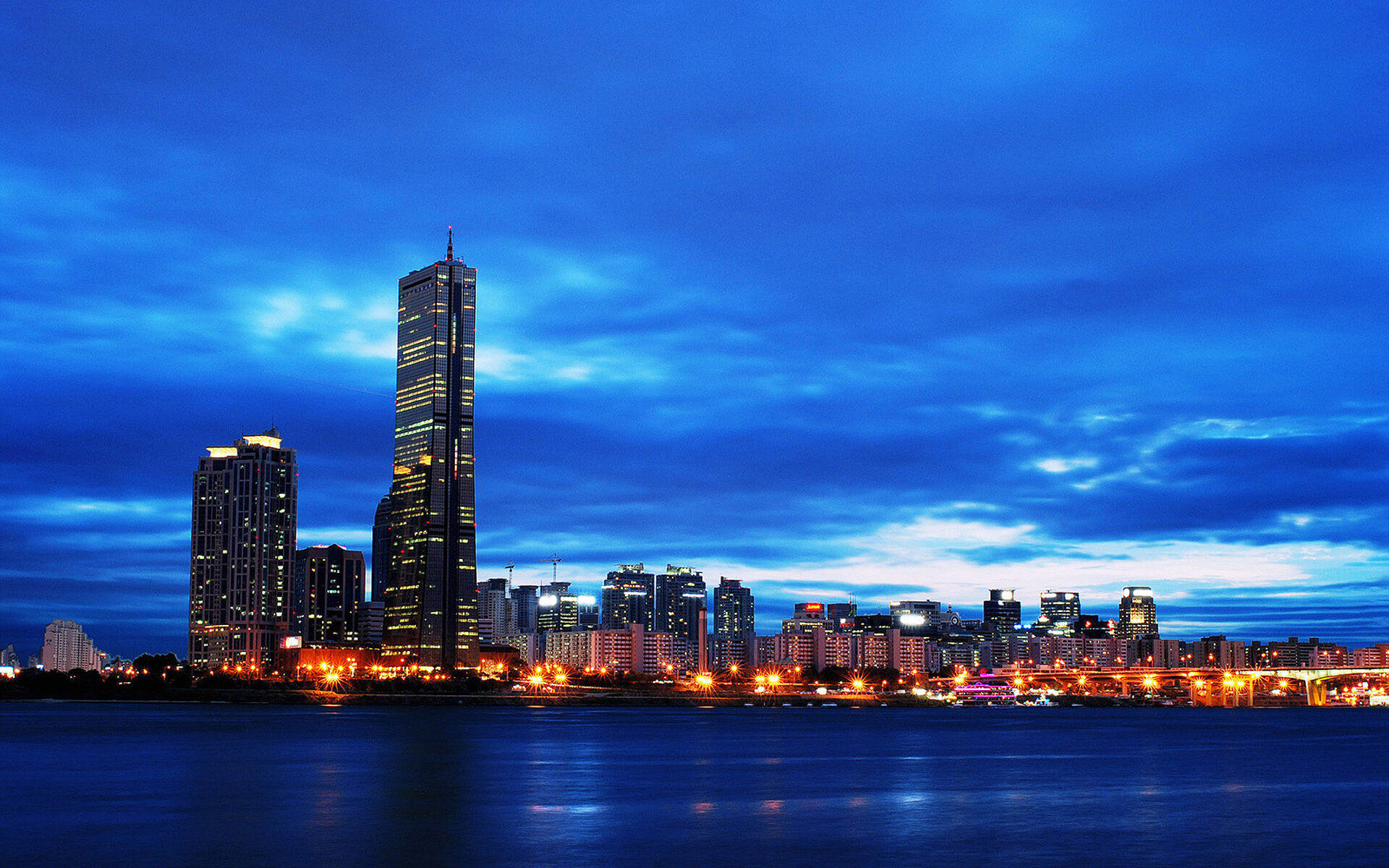Welcome to Seoul, the capital of the Republic of South Korea. For decades the city known as The Miracle of The Han, kept its head down, barely raising a ripple as the country rebuilt in the decades following the Korean War.
Today, Seoul has re-emerged as an economic powerhouse and the epicenter of Hallyu, a Korean wave of culture that is sweeping the world’s smartphones, food halls, and dance floors.
But Seoul wasn’t always so outgoing. In the 14th century, a 12-mile fortress wall encircled Korea’s ancient capital; its gates closed each night to keep marauding Siberian tigers and invaders at bay. Since then the city has spilled out far beyond and above its great city gates and Guardian Mountains. 21st century Seoul is a city where glass and steel towers and the ancient curves of palace roofs coexist.
It’s a city where the brushstrokes of the past and contemporary public art tell stories of tradition and inspiration.
The K-Style Hub
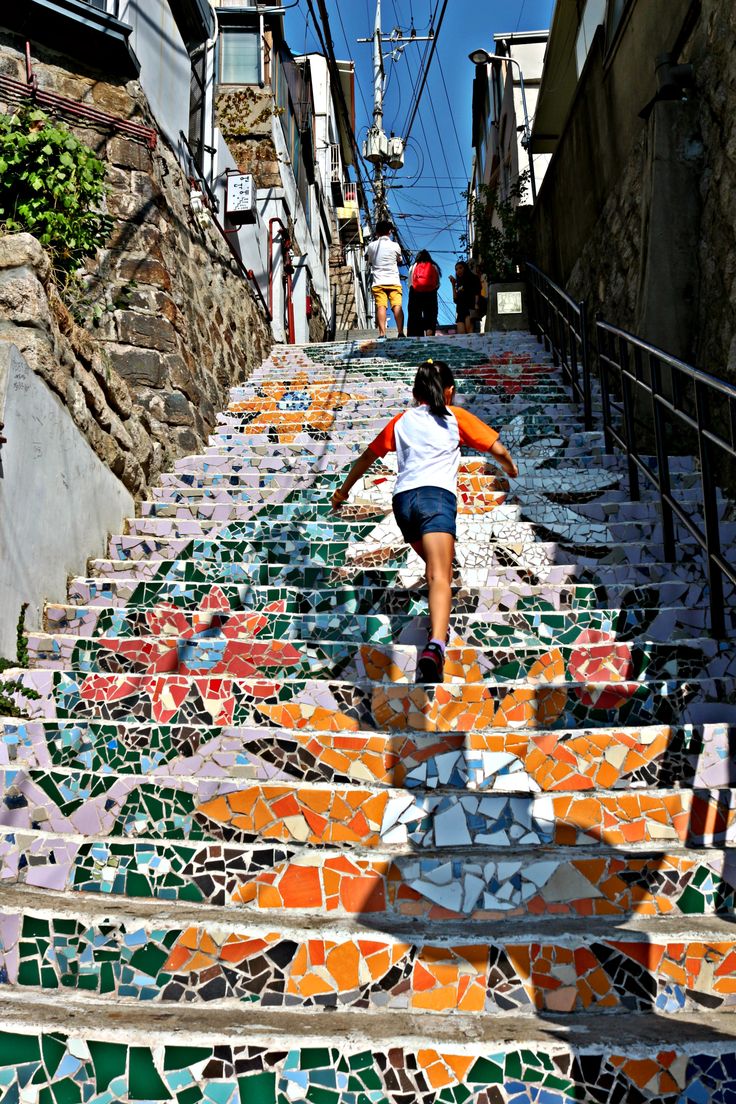
Coming to grips with Seoul’s incredible size and sweeping narrative can be a little daunting, so start your adventure at the K-Style Hub, a state-of-the-art visitor center. Where South Korea’s past, present, and future converge, from the latest in K-Pop to its timeless national parks, from the cutting edge of K Design to culinary traditions which have taken centuries to perfect.
The traditional dress
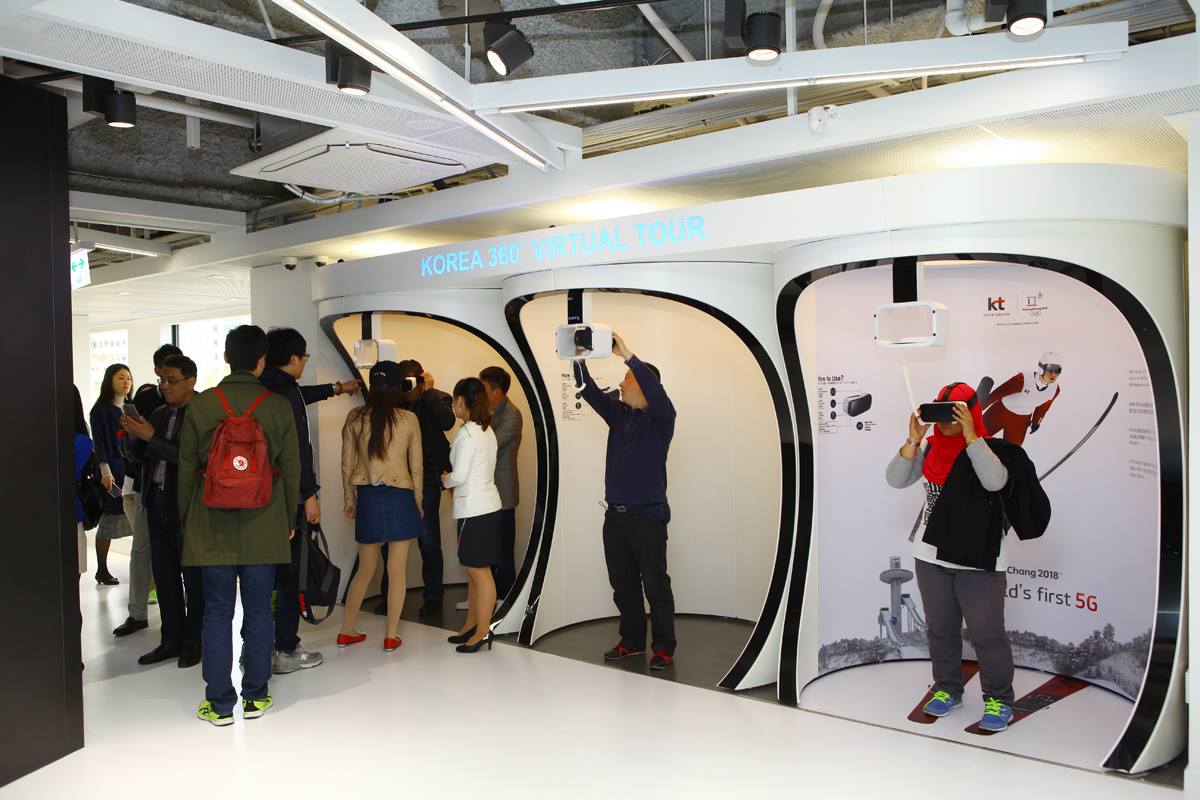
And while you’re here, why not slip into the traditional dress. Dressing up Hanbok-style doesn’t just put you in touch with Koreas proud past, it also gives you free admission into many of Seoul’s most revered historic places.
The gleaming statue of Sejong the Great
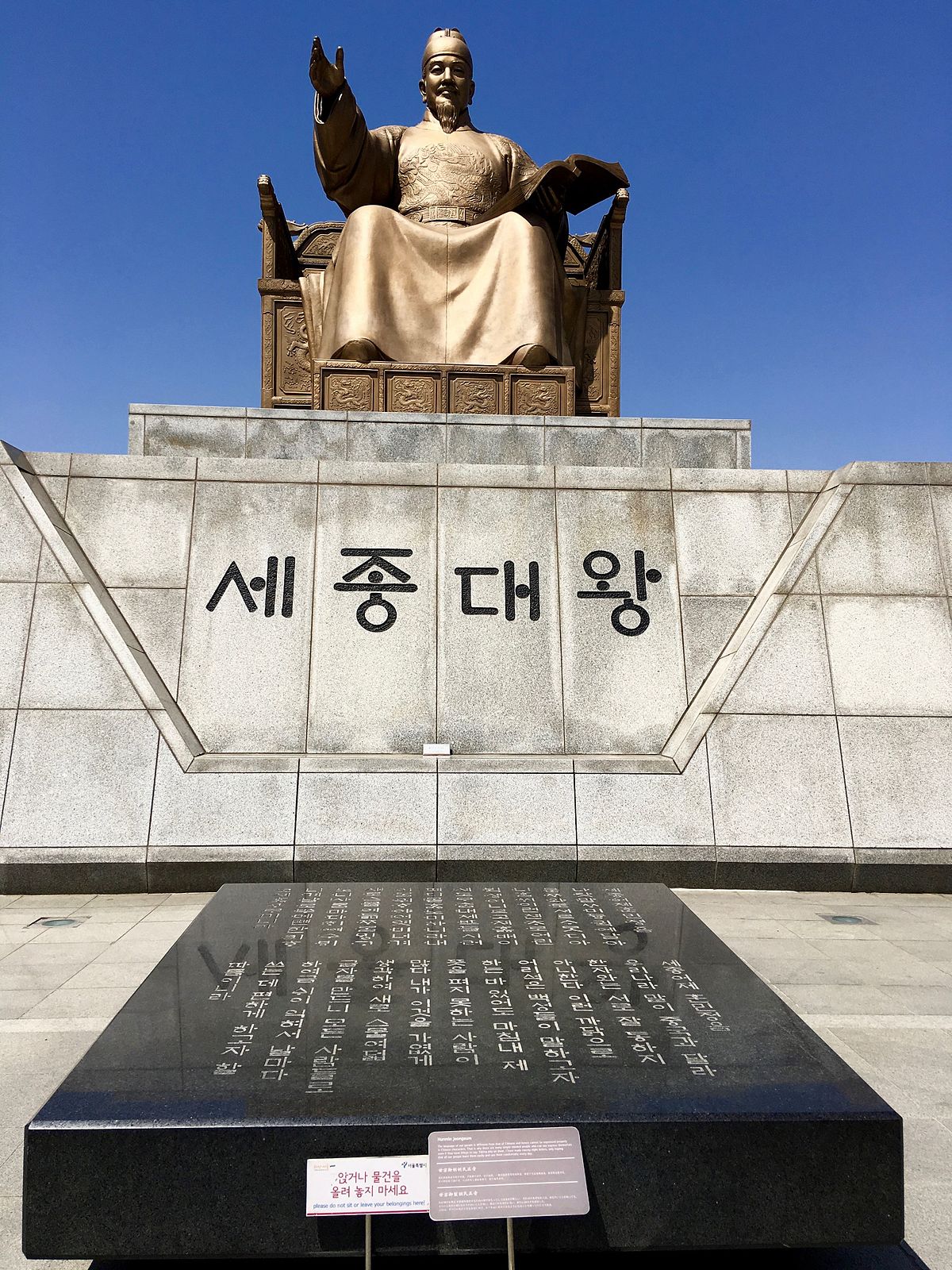
At the head of Gwanghwamun Square sits the gleaming statue of Sejong the Great, the 15th-century Joseon-dynasty king whose reign oversaw a golden age of literature, science, and technology.
Gyeongbokgung
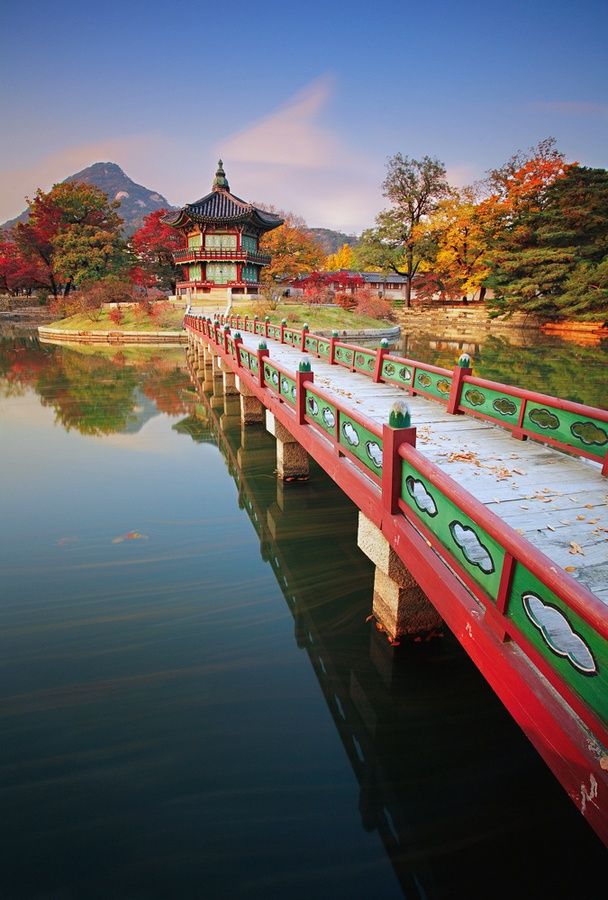
The great leader sits before the grandest of Seoul’s five royal palaces, Gyeongbokgung, the Palace of Shining Happiness. A residence of Joseon Dynasty rulers from the late 1300s until 1910, the palace has endured fires, invasion, and wars.
Wander through the palace’s ornate gates, pavilions, halls and throne room, which in accordance with Confucian principles, are perfectly balanced by the simplicity of the pine-covered mountain backdrop.
The adjoining palaces of Changdeokgung and Changgyeongung

Take a short bus or subway ride to the east, to explore the adjoining palaces of Changdeokgung and Changgyeongung, which are separated by a simple stone wall.
Changdeokgung’s secret garden
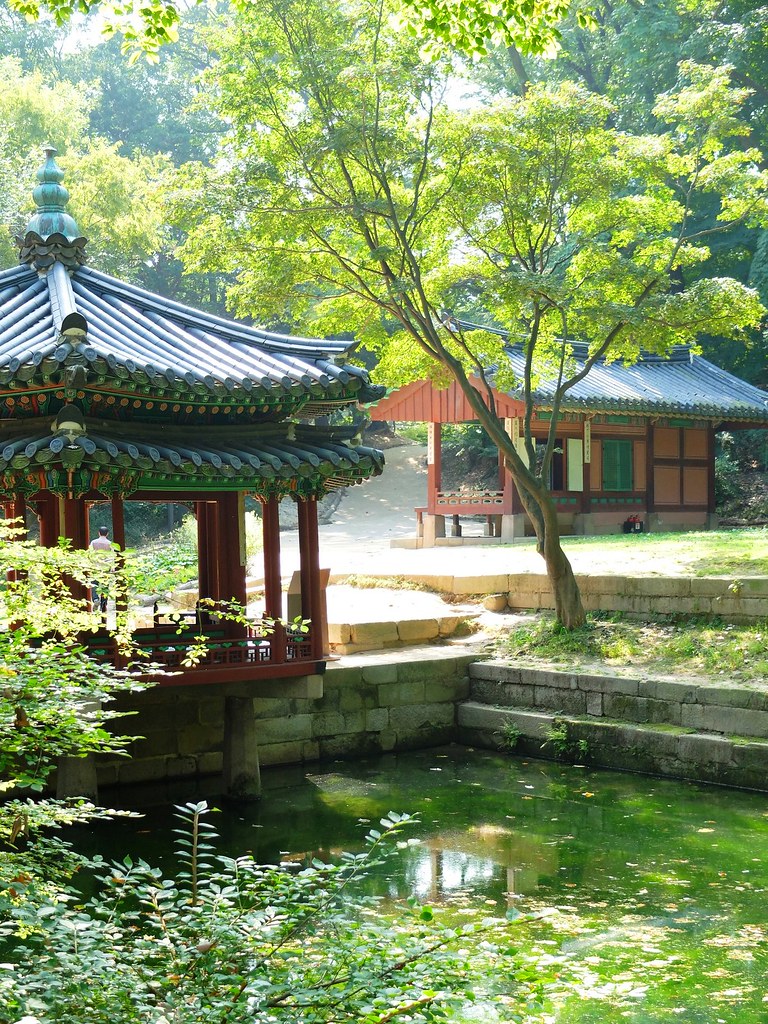
In the tranquil confines of Changdeokgung’s secret garden, sit for a while by the pond where kings once paused from royal duties and dramas to write poetry beneath the Ginko, walnut and plum trees.
Deoksugung Palace
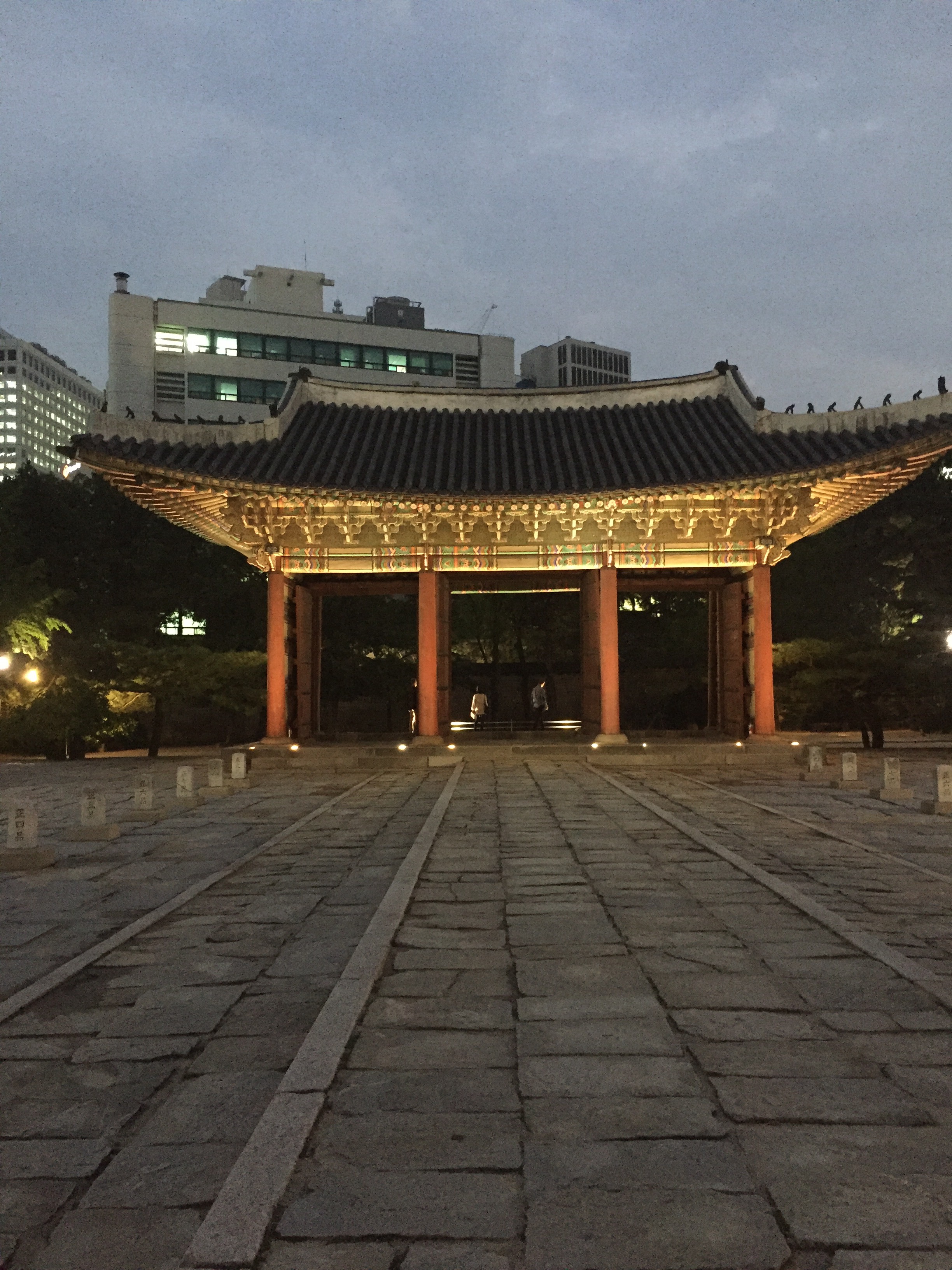
To the south at Deoksugung Palace, see the changing of the guard which takes place three times each day. Then explore the eclectic mix of palace buildings, such as the pavilion where coffee-loving King Gojong enjoyed his daily cup, paving the way for his country’s future caffeine obsession.
Gyeonghuigung
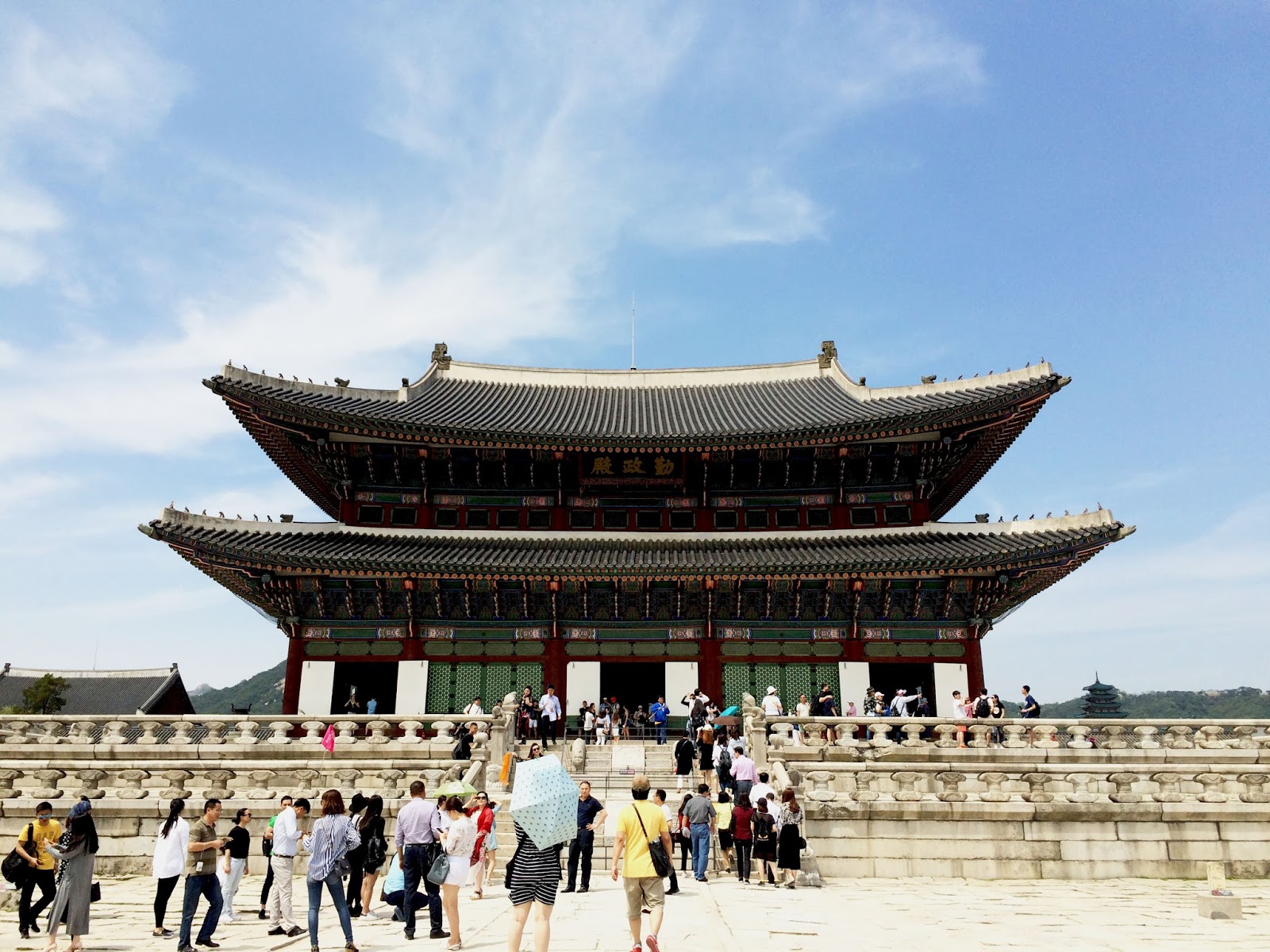
Just to the west, is the last of Seoul’s great palaces, Gyeonghuigung, a royal refuge in times of unrest.
The Namsangol Hanok Village
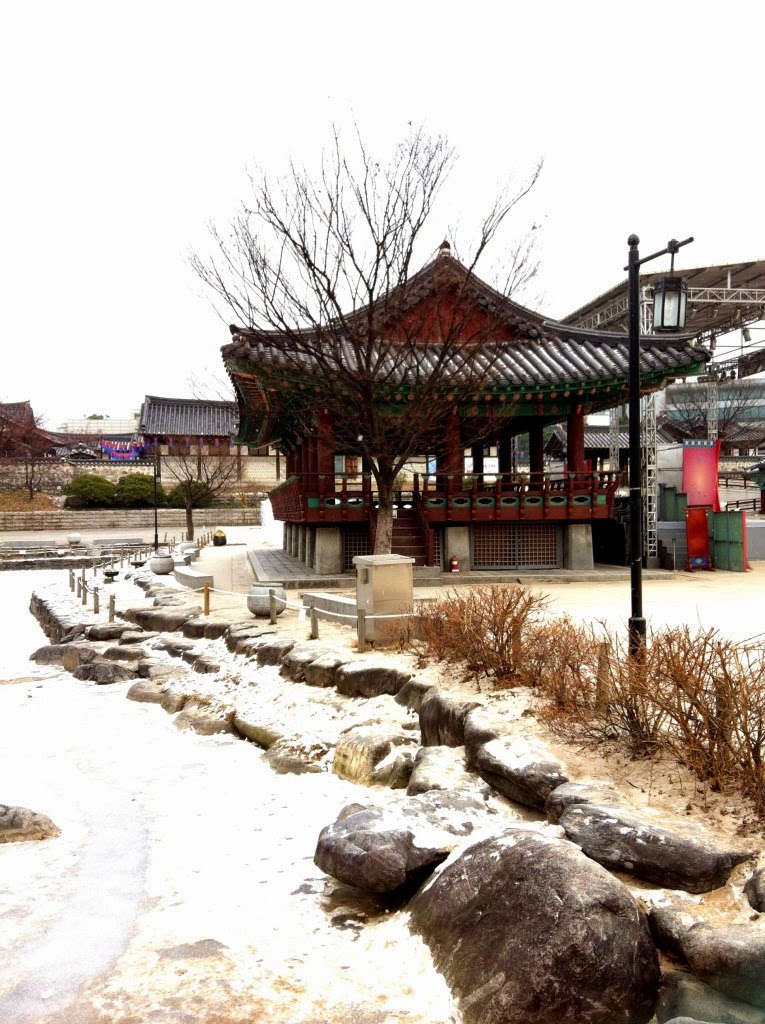
After exploring Seoul’s vast temple complexes, see how government officials and ordinary Koreans once lived.
At the Namsangol Hanok Village, ancient buildings and traditions have been preserved in one of the most scenic and tranquil areas of Seoul.
The Korea Furniture Museum in Seongbuk-gu
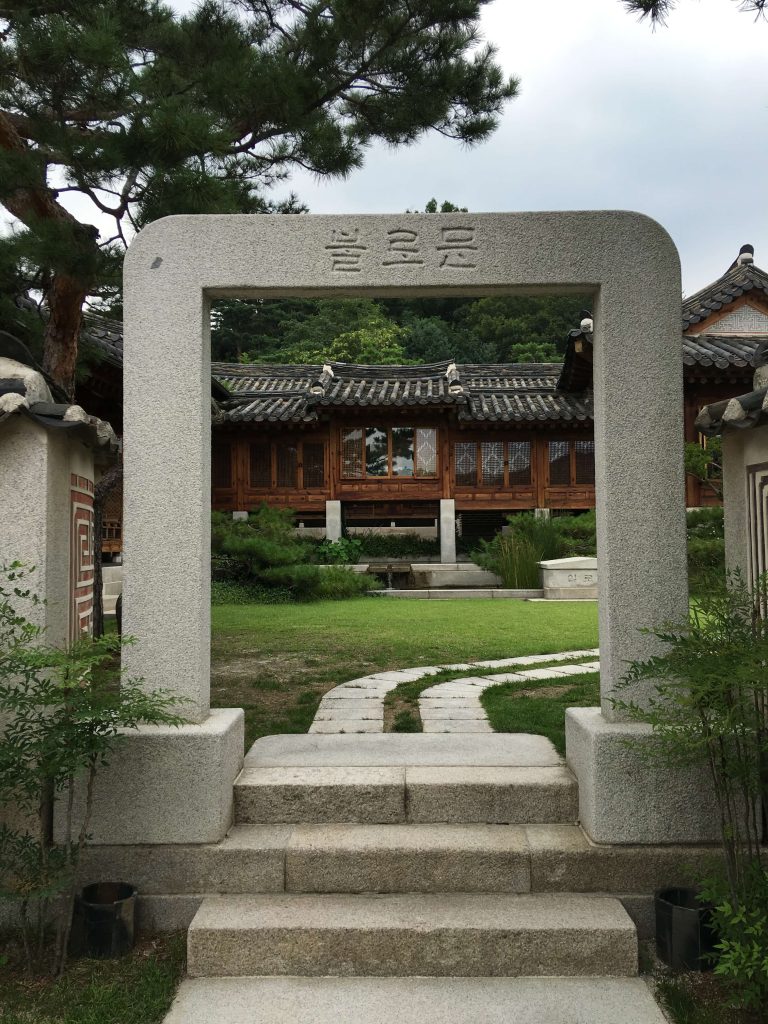
To see how Seoul’s citizens furnished their homes, visit the Korea Furniture Museum in Seongbuk-gu. Here, over 2000 exquisite pieces of practical craftsmanship are displayed within ten traditional houses.
The National Museum of Korea
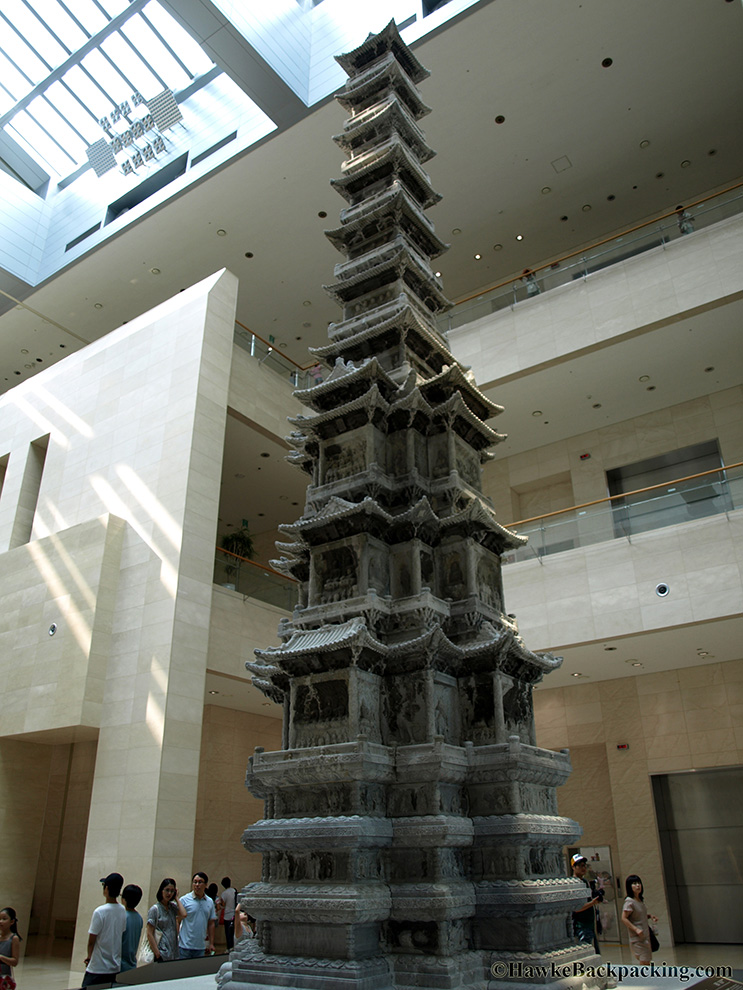
The story of Korean craftsmanship continues at the National Museum of Korea, which houses national treasures such as the Ten Story Pagoda and priceless white porcelain from the Joseon era.
Namdaemun Market
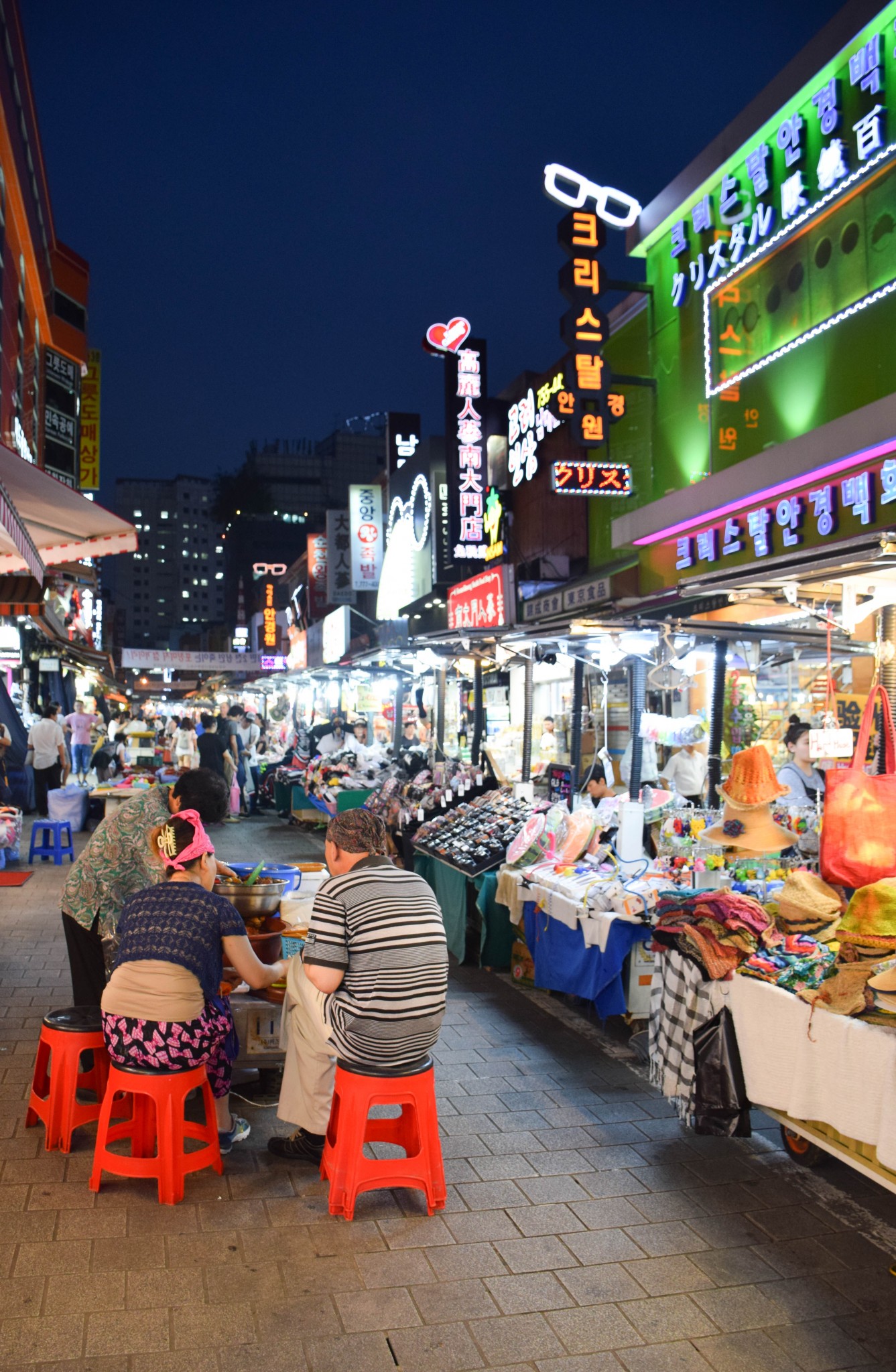
But it’s in Seoul’s busy streets where the past and present really rub shoulders, and where the two Korean loves of shopping and food go hand in hand.
Close to Seoul’s Great South Gate, step into Koreas largest marketplace, Namdaemun Market, where locals have been bargaining hard for over 600 years.
If you’re looking for beauty products, join the one million shoppers who stream into neighboring Myeong-dong each day to hit the 1000 cosmetic stores. And when your head starts to spin, take a snack break. From lobster tails to foot long ice creams, the options here are almost limitless!
Insadong
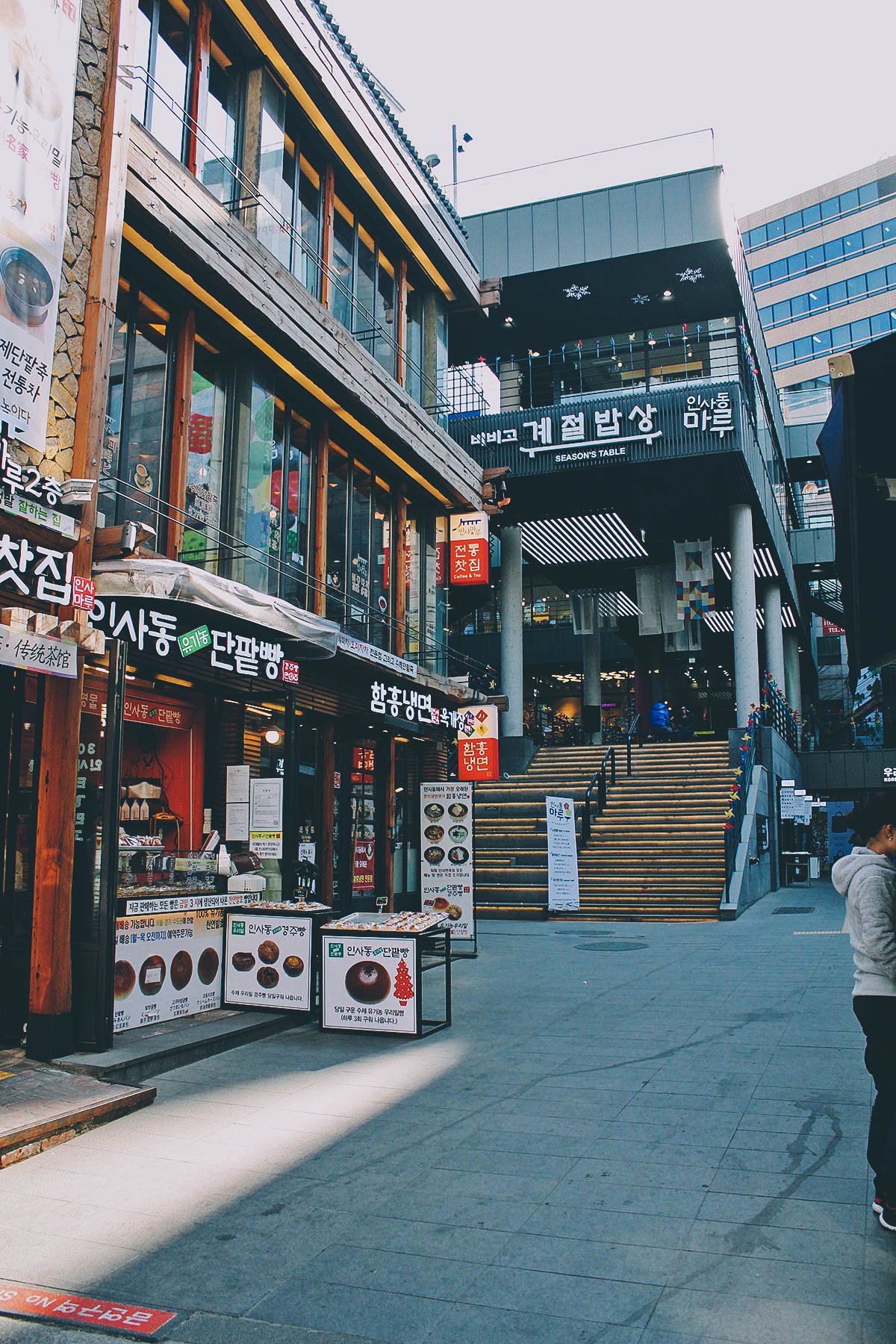
A few blocks north is Insadong, where you can disappear for days amid the labyrinth of antique, curio and craft stalls.
Dongdaemun Market
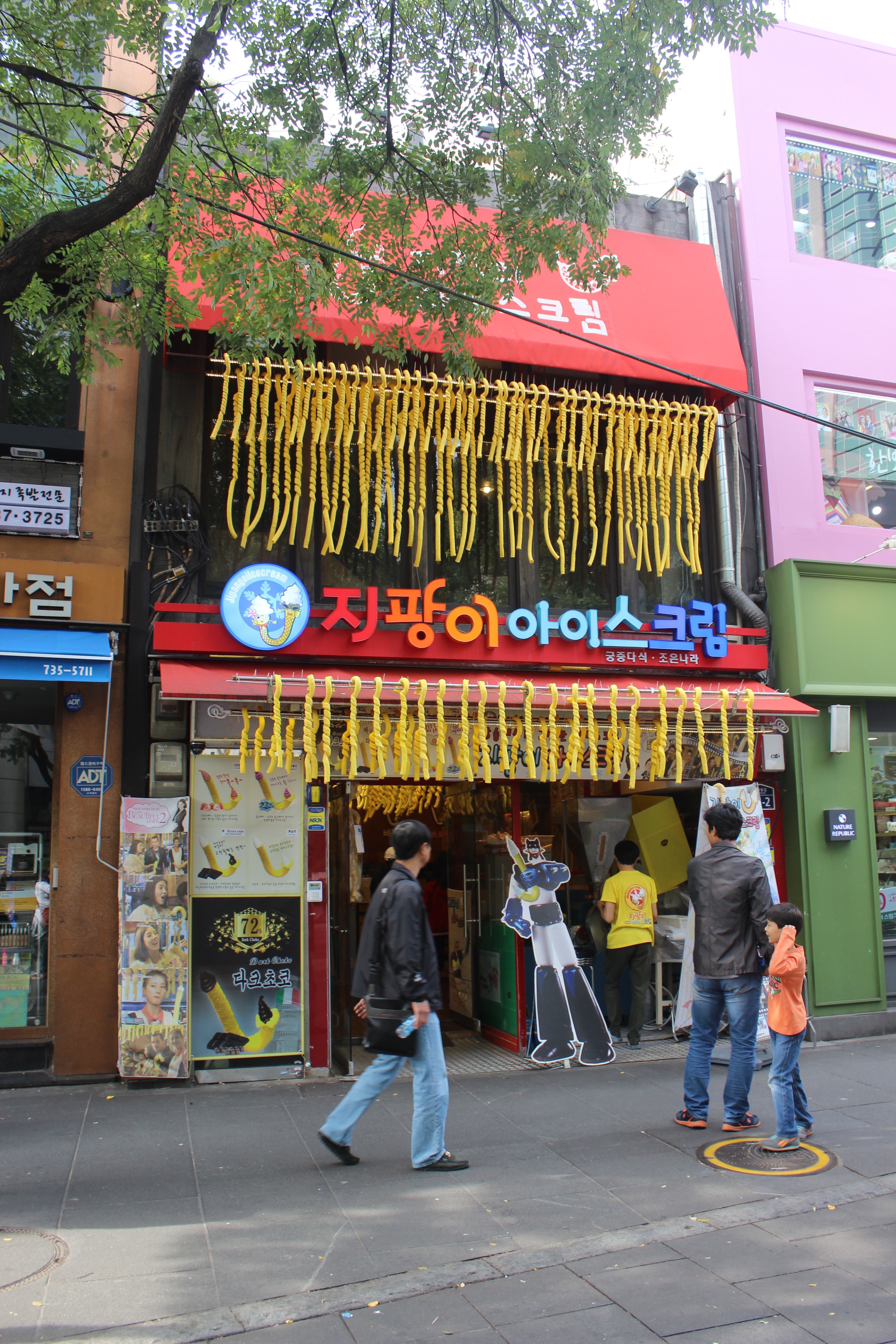
While just a short bus ride away at the Dongdaemun Market, you could spend months browsing the fashions on offer in the area’s 26 malls and 30,000 specialty shops.
The Gwangjang Traditional Market
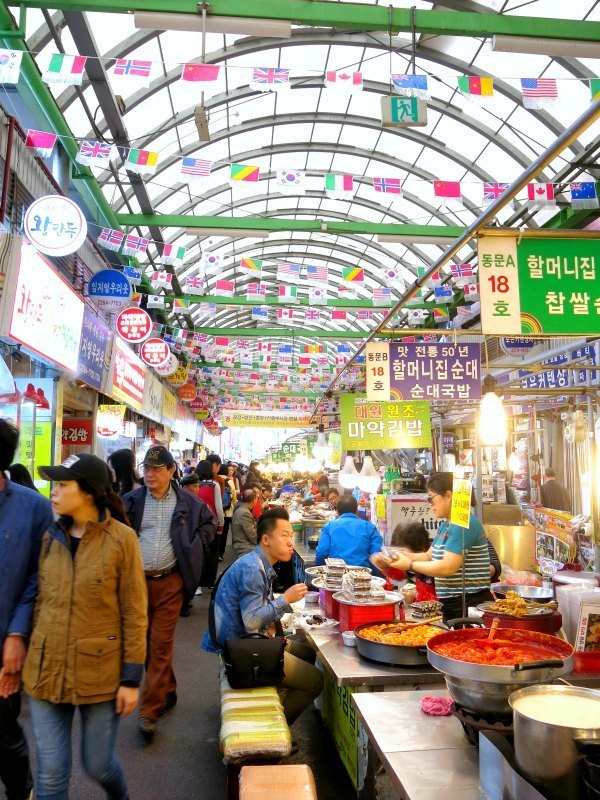
Blow the dust off the old wares and vintage bargains at the Gwangjang Traditional Market, then treat yourself to some of the best Korean pancakes in the city.
Noryangjin Fish Market
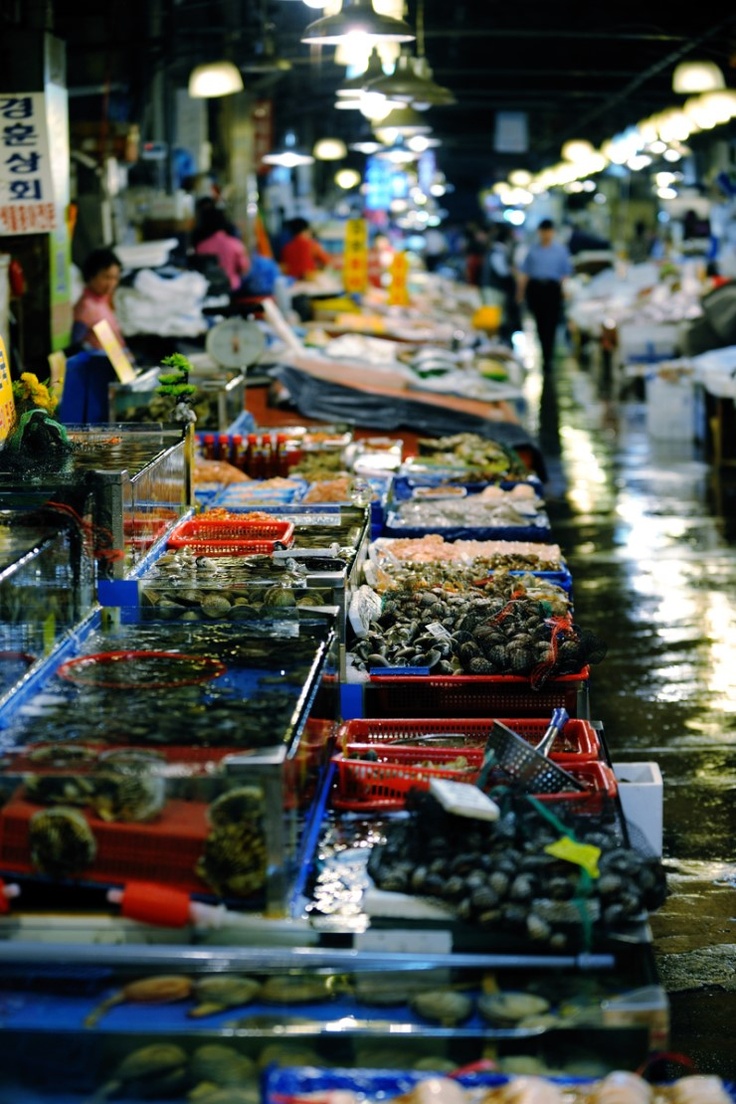
If you’re a seafood lover, cross the river to the futuristic Noryangjin Fish Market, where the skillful vendors at 700 stalls sell, slice and cook every kind of seafood imaginable!
The Samseong-dong
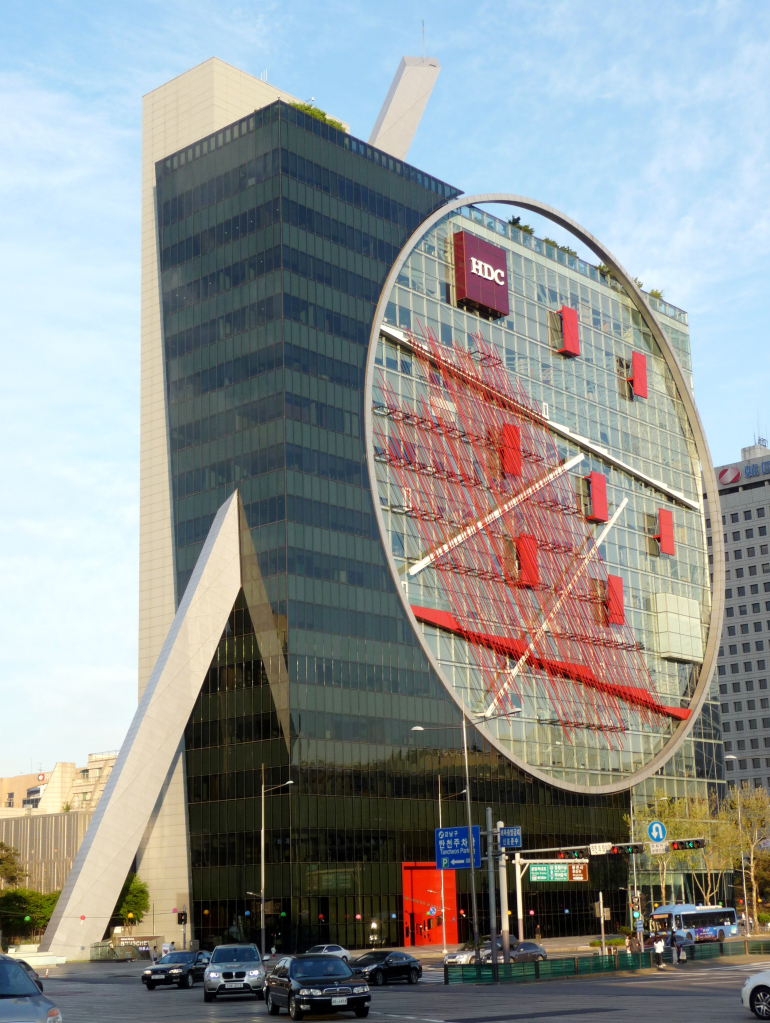
Looking for some Gangnam style? Head just upriver to the Samseong-dong, whose exclusive boutiques and wide boulevards have made it the Beverly Hills of Seoul.
The Bongeunsa Buddhist Temple
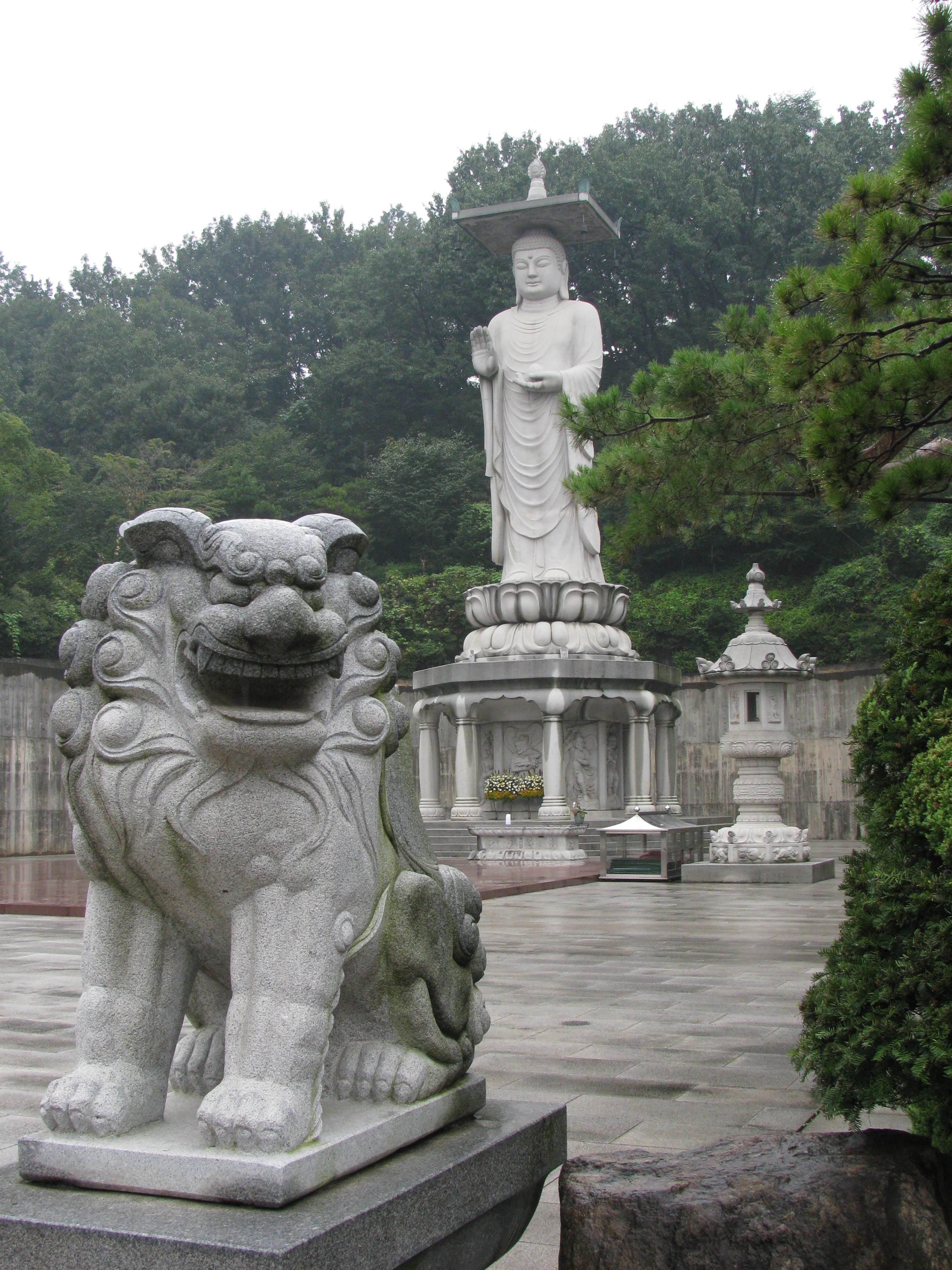
But it’s not all bling in Gangnam, you’ll find plenty of bliss here too. Pass through the Gate of Truth and spend a few hours in the wooded surrounds of the Bongeunsa Buddhist Temple, a peaceful antidote to the fierce pace of Seoul’s shopping.
Olympic Park
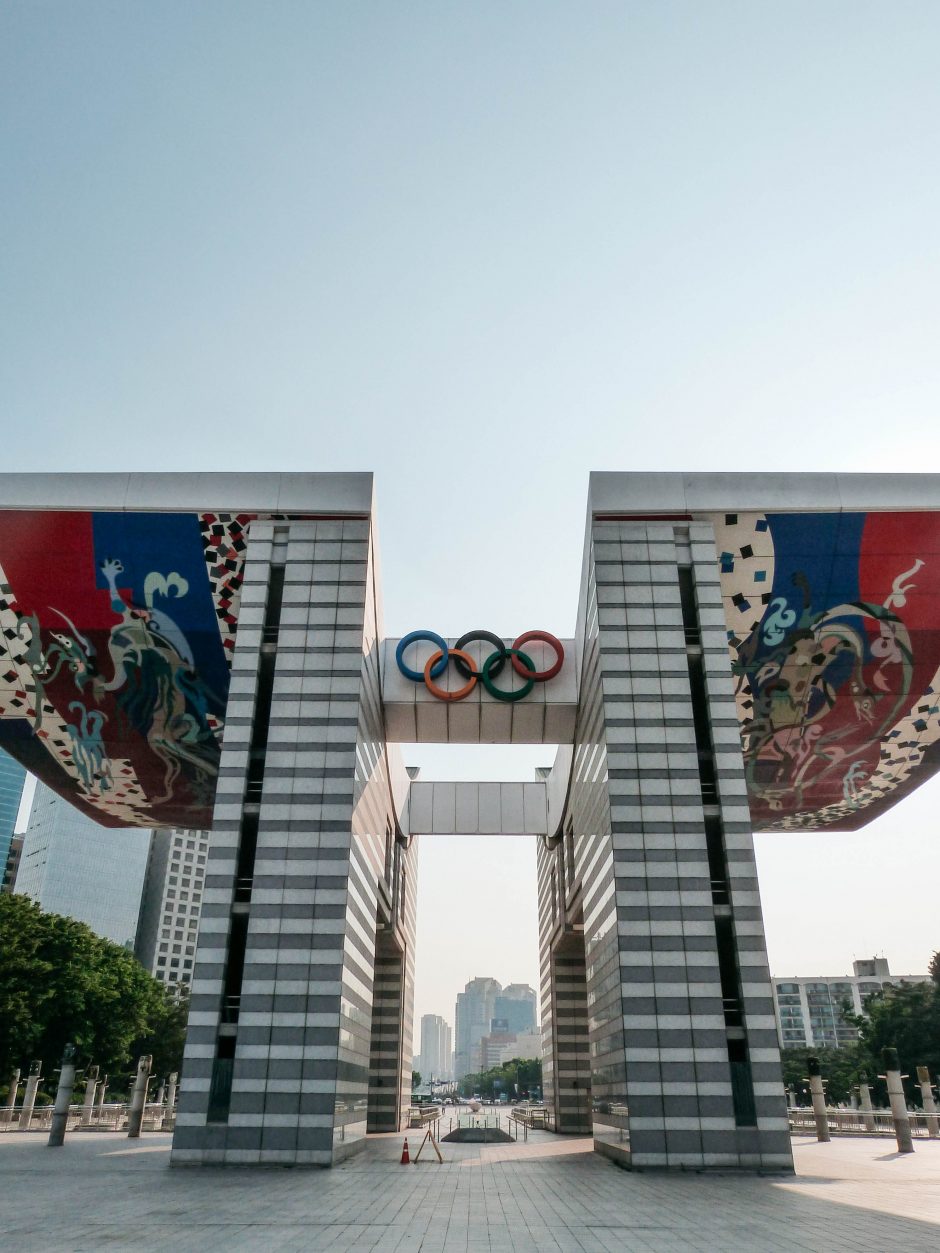
Seoul is filled with quiet spaces. Also in Gangnam, stroll past the stadiums and museums of the 24th Summer Olympics, at Olympic Park.
Seoul Forest
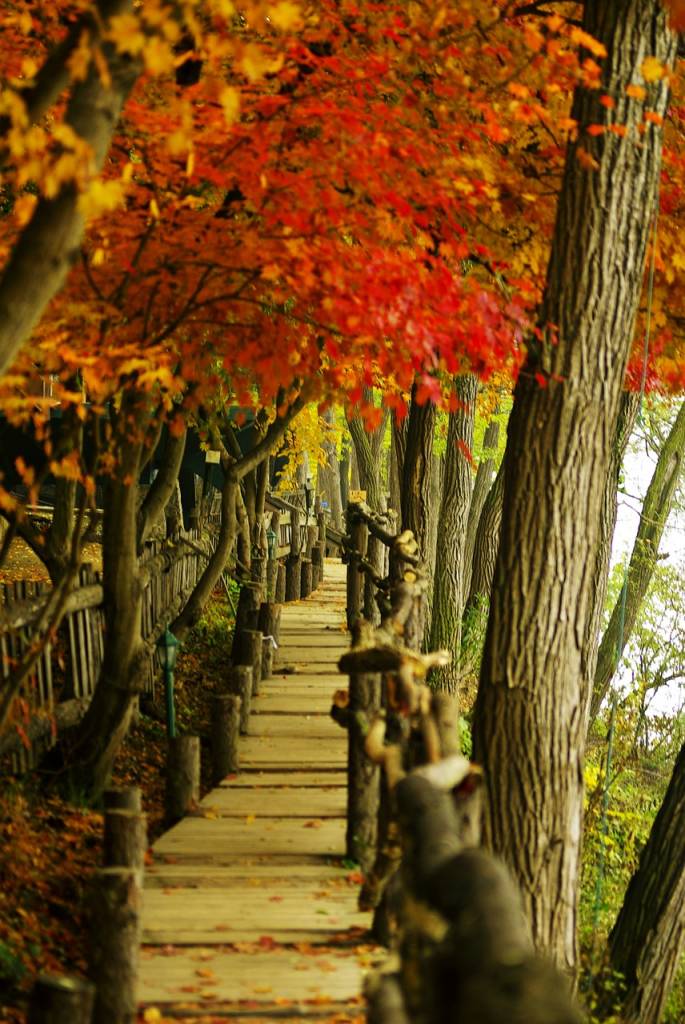
Across the river, relax with locals amid the leafy glades of Seoul Forest.
Yongsan Park
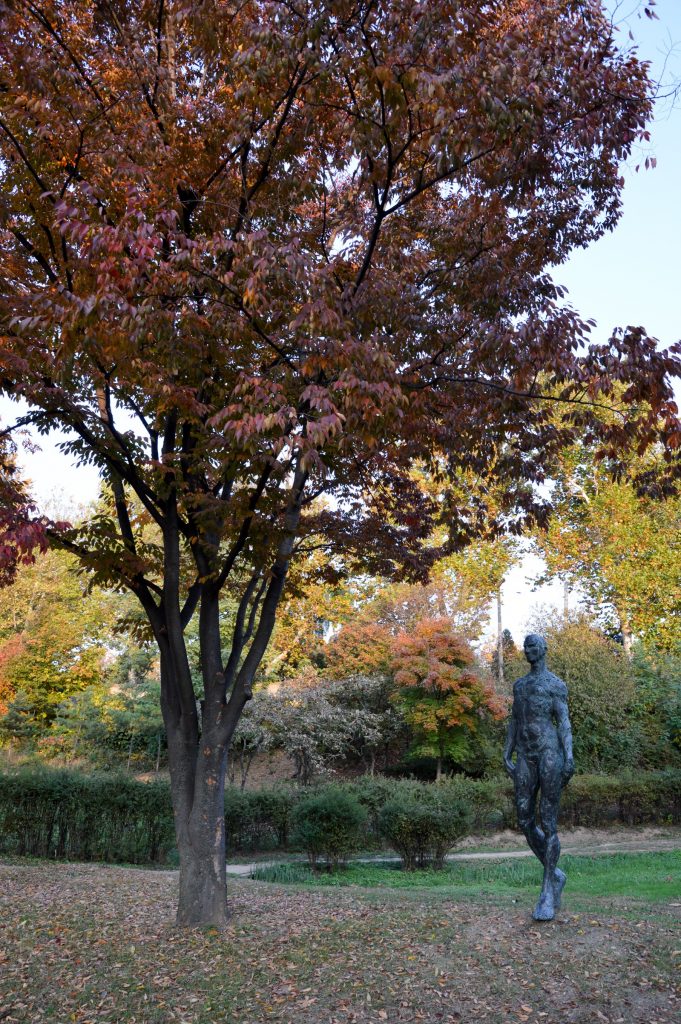
While just downriver, enjoy the ponds and playful sculptures at Yongsan Park.
Guardian Mountains
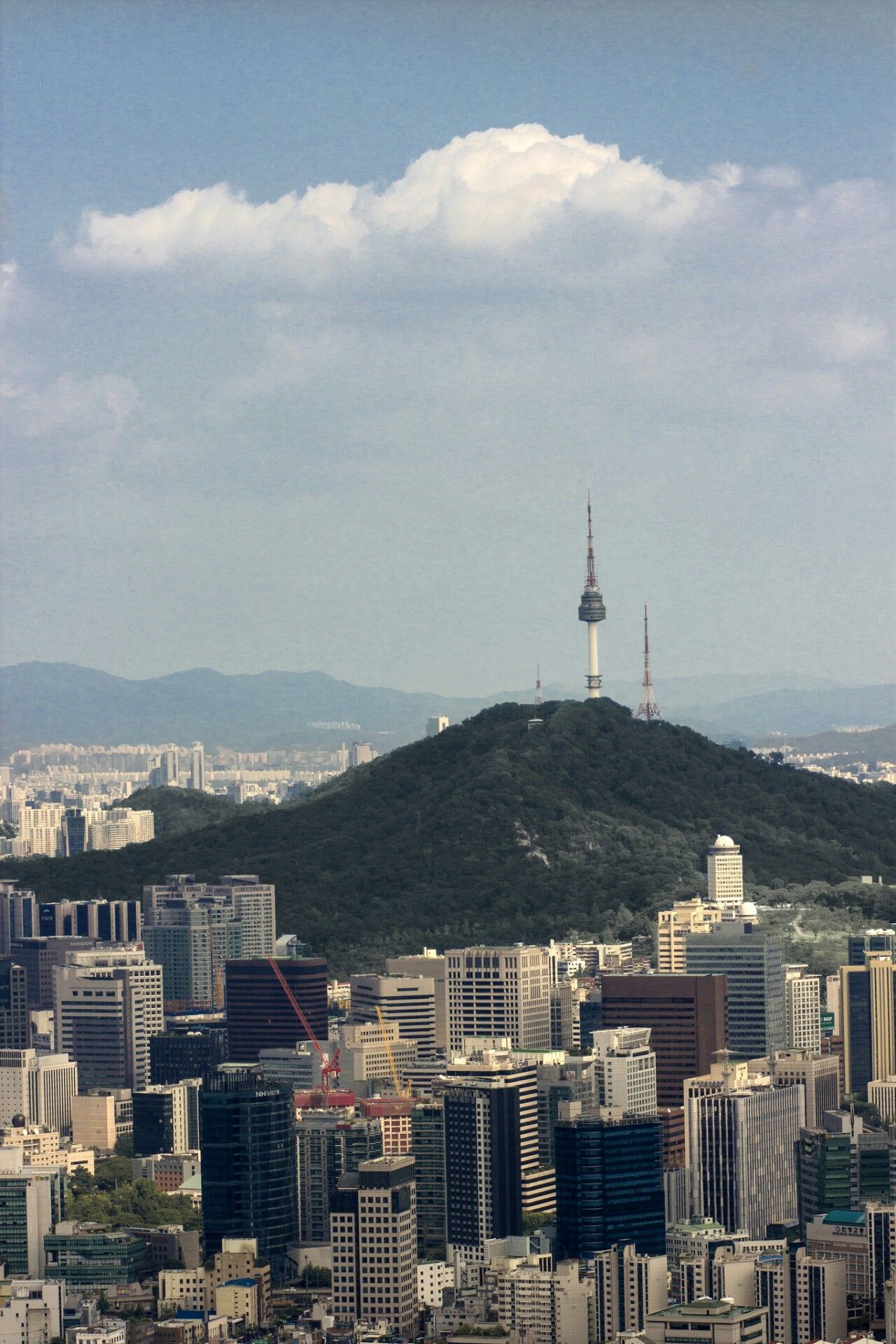
Namsan is one of Seoul’s Guardian Mountains, marking the southern limit of the ancient capital. The city has long since grown around it and today the mountain has become one of the city’s favorite green getaways.
Namsan Botanical Garden
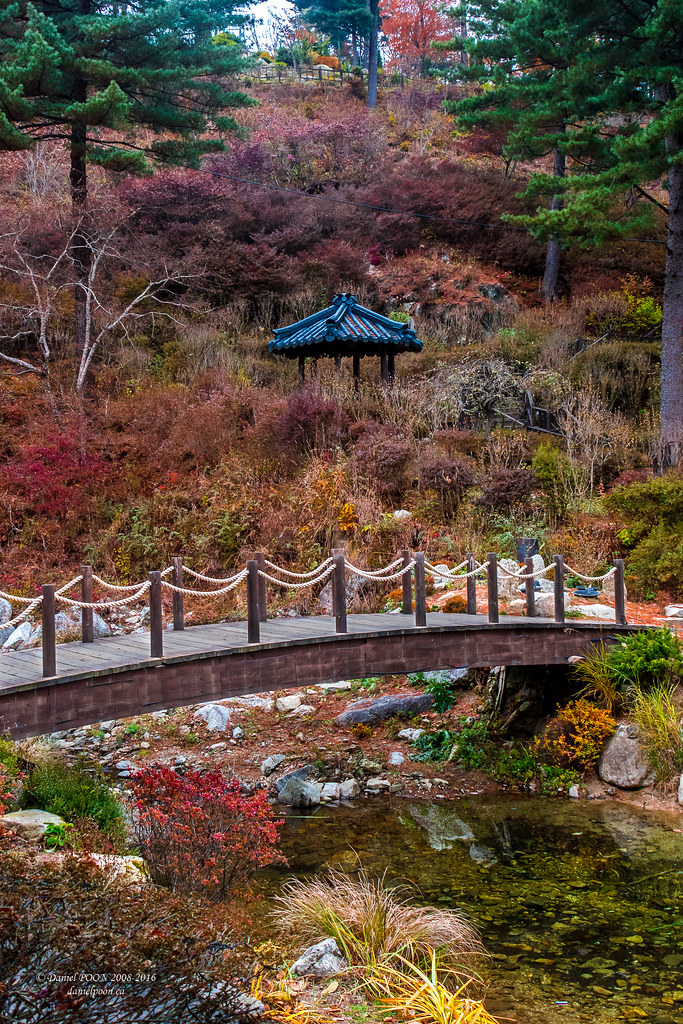
At Namsan Botanical Garden, follow the winding paths through fields of wildflowers and pine forests.
Seoul’s iconic tower
![]()
Then hike, or take the cable car to the peak, and take in the sweeping views from the old city walls or from Seoul’s iconic tower.
Cheonggyecheon Stream
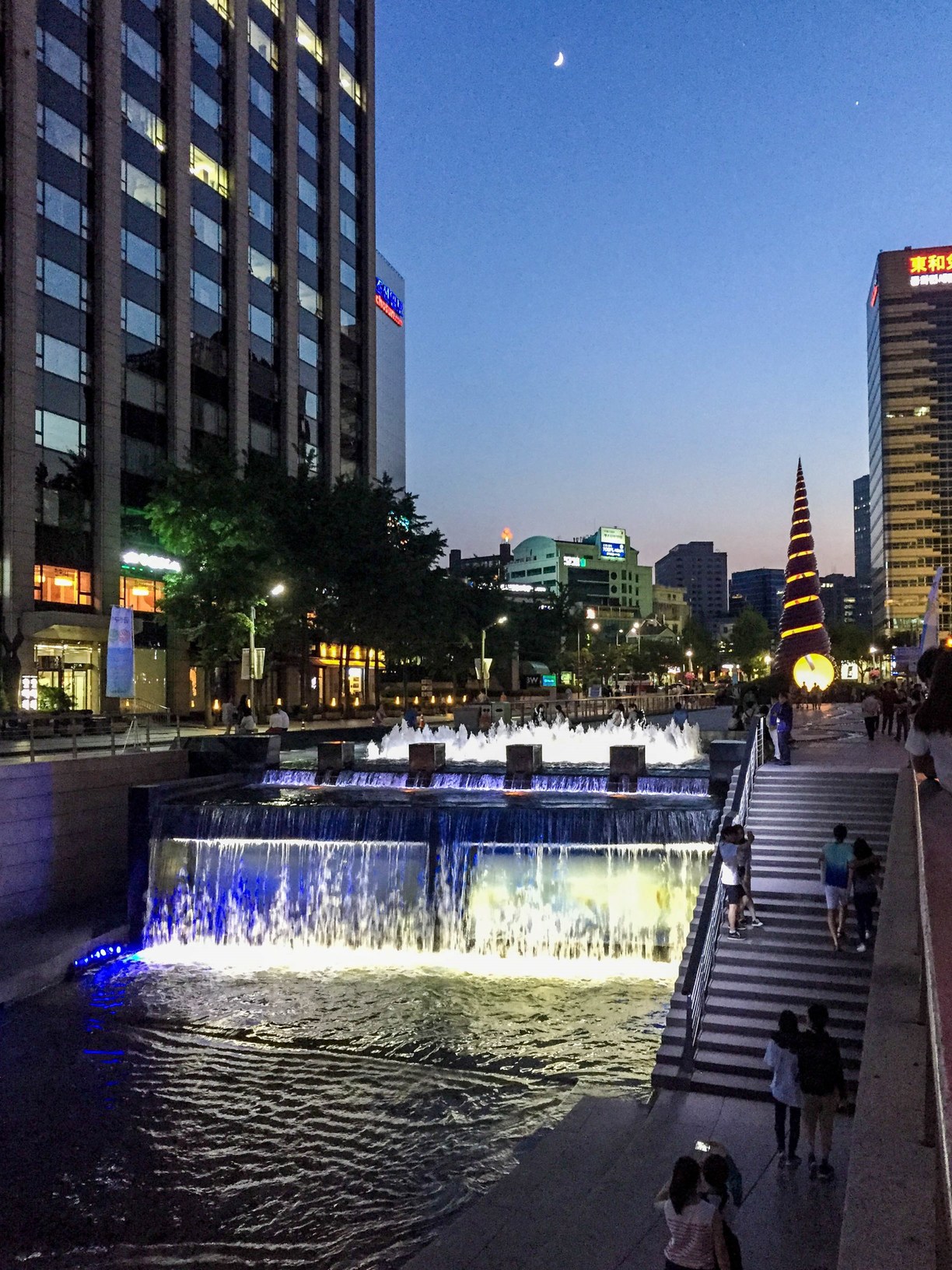
Running right through the busy heart of downtown Seoul, another landmark has also been given a new lease on life. After centuries of neglect, Cheonggyecheon Stream has been transformed into a 7-mile corridor of serenity and creativity.
Take time out just a few feet from some of the city’s busiest streets, in a space so quiet you can sometimes hear the sweet sounds of bird song and whispering lovers.
Bukhansan National Park
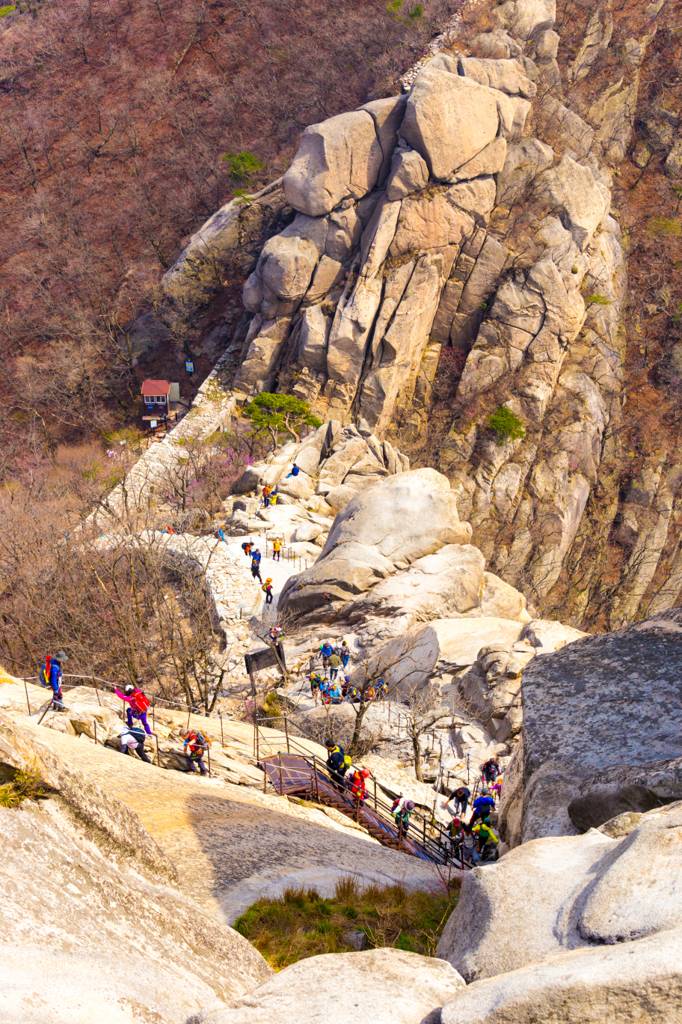
Leave the bright lights and noise of the city even further behind, amid granite-studded peaks of Bukhansan National Park.
Take the 45-minute subway ride from central Seoul and spend the day hiking through the crisp mountain air, past ancient temples and rushing streams.
The truce village of Panmunjom
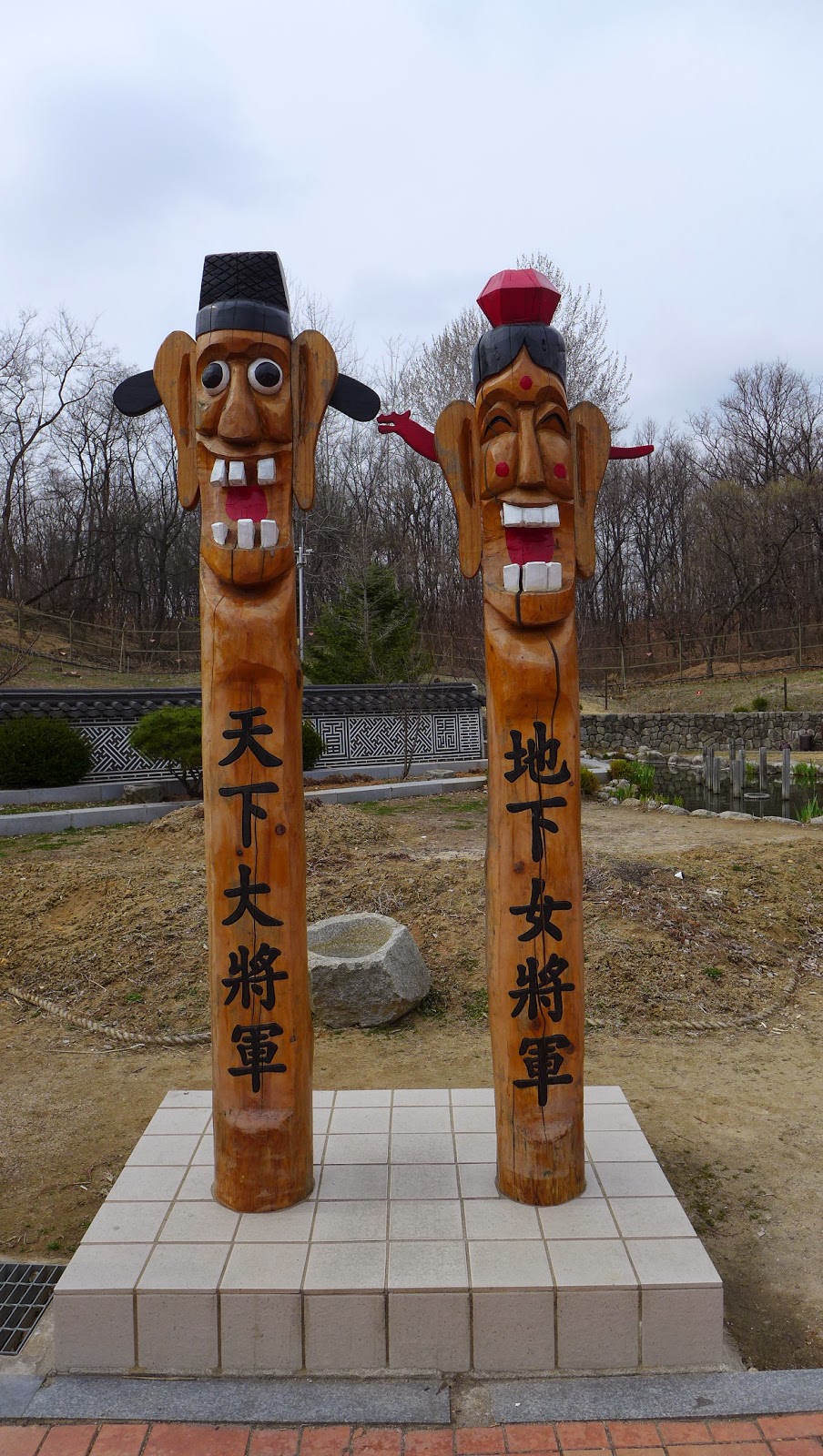
Just 55 miles from Seoul is another day trip which will give you pause for deep reflection, the truce village of Panmunjom.
After three years of brutal warfare, it was here in 1953, where the armistice was signed between North and South Korea.
The DMZ
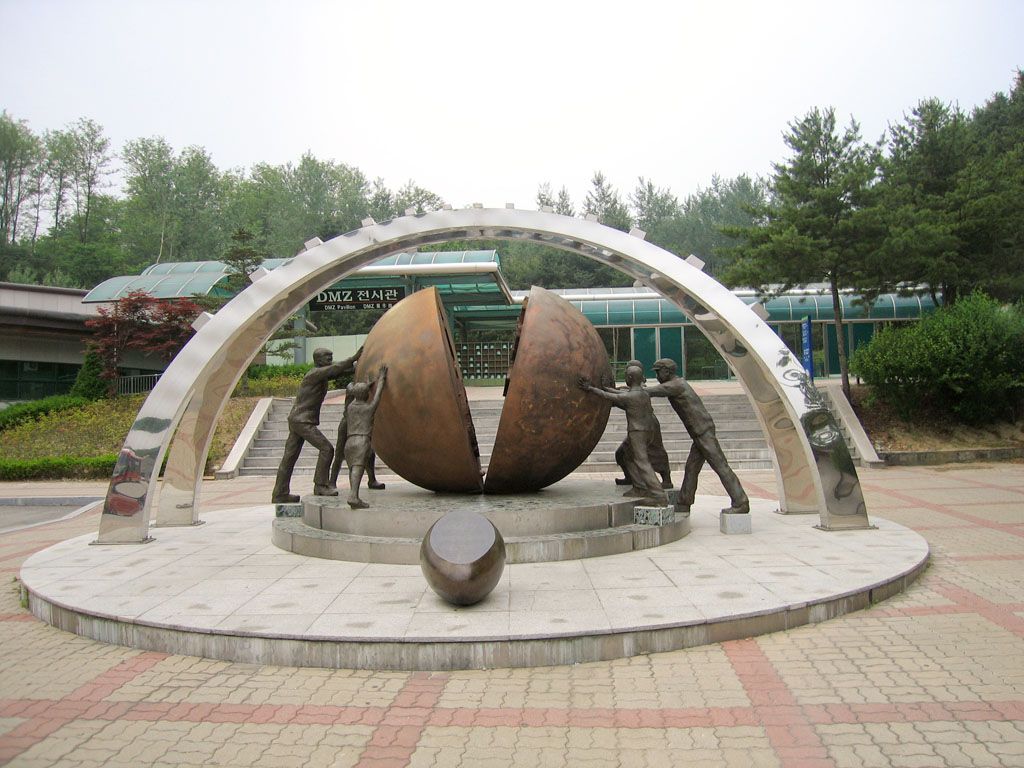
From the observation post, look out upon the eerie silence of the DMZ, the 2.5-mile wide buffer zone that separates the two Koreas.
Yet despite the tense atmosphere here, there is also a prevailing sense of hope.
The War Memorial of Korea
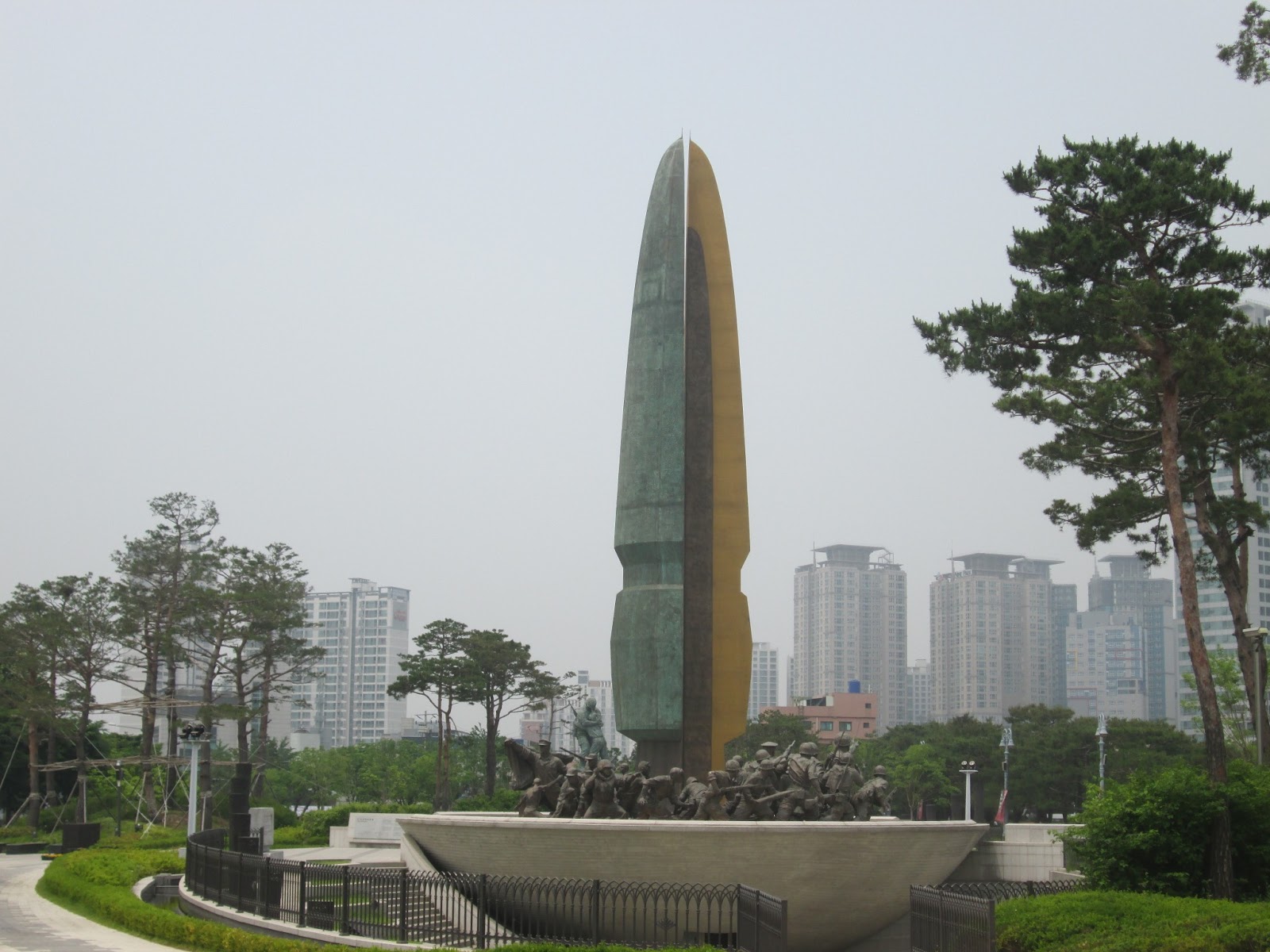
On returning to Seoul, spend a little time at the War Memorial of Korea to truly appreciate the scale and trauma of the Korean War, a conflict that tore a country in two, involved 22 nations, and cost millions of lives.
Besides displaying all the usual machinery of war, above all, this is of a place of remembrance, longing, and determination.
The Banpo Bridge Night View
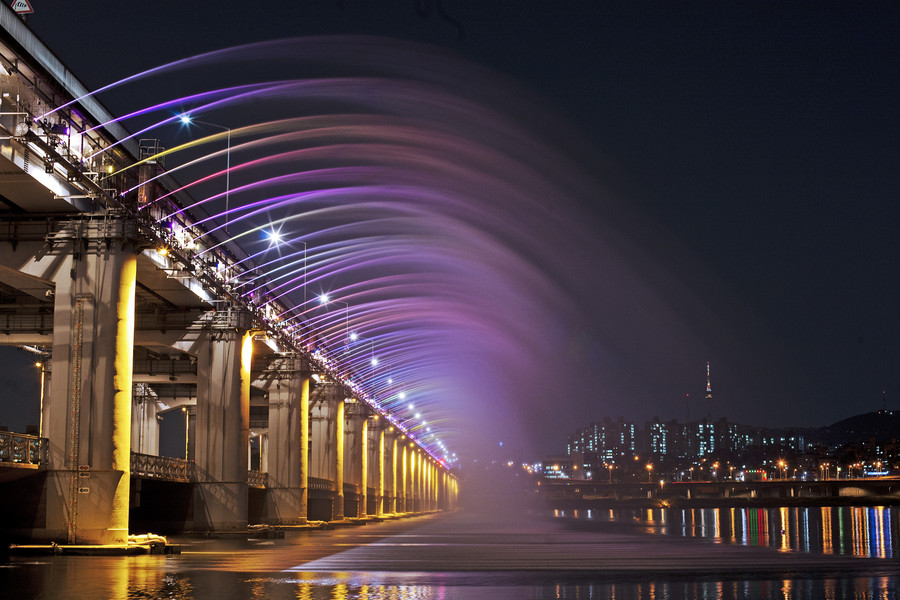
When the sun gets low and the city lights up, locals gather on the banks of the Han to see the Banpo Bridge erupt in waves of water and light.
Conclusion
It’s in moments like these that South Koreans reflect on life’s possibilities, and are reminded that they are capable of anything they put their minds, imaginations, and hearts to. And Seoul,
The Miracle on The Han is certainly proof of that.
